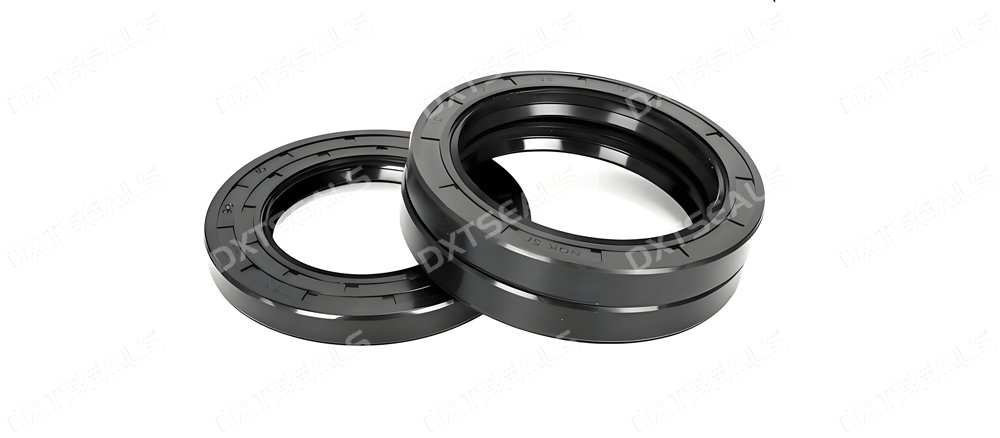
Oil seals—also known as shaft seals or rotary seals—are essential components in countless industrial systems. Whether in automotive gearboxes, hydraulic pumps, or food-processing equipment, choosing the right oil seal can be the difference between long-term performance and costly downtime.
At DXTSEALS, we specialize in high-performance sealing solutions, and we’ve outlined five key indicators to help you make the best oil seal choice for your application.
🔑 1. Operating Temperature Range
Temperature is one of the most critical factors affecting oil seal performance. Choosing the wrong material can lead to premature hardening, cracking, or deformation.
Common material guidelines:
-
NBR (Nitrile): -40°C to +120°C — great for general use
-
FKM (Viton®): -20°C to +200°C — ideal for high-temperature environments
-
Silicone: -60°C to +200°C — suitable for both high and low extremes
-
PTFE: up to 260°C — best for extreme heat and chemical resistance
➡️ Tip from DXTSEALS: Always match the seal material to your system’s maximum sustained temperature.
💧 2. Media Compatibility (Oil, Grease, Water, Chemicals)
Oil seals must resist degradation from the fluids they contain or exclude. A mismatch between material and medium can lead to swelling, shrinkage, or chemical breakdown.
Typical scenarios:
-
Hydraulic oil: NBR or HNBR
-
Aggressive fuels or solvents: FKM or PTFE
-
Food-grade oils or water: Silicone or FDA-compliant materials
➡️ DXTSEALS insight: Provide us with fluid specifications and we’ll help you choose the optimal elastomer or composite.
⚙️ 3. Shaft Speed and Pressure
High rotational speed or pressure can generate excess heat and distort seal lips, reducing life span.
General sealing guidance:
-
Standard oil seals: up to 5,000 RPM
-
High-speed applications: require PTFE or spring-loaded seals
-
Pressurized systems (>0.5 bar): may need pressure-resistant designs or back-up rings
➡️ DXTSEALS recommendation: For dynamic applications, CNC-precision sealing edges and optimized lip geometries improve sealing performance at speed.
🧱 4. Housing and Shaft Material & Surface Finish
The oil seal interacts constantly with the shaft surface. To maintain an effective seal:
-
Surface roughness (Ra): should be 0.2–0.8 μm
-
No grooves or scratches should be present on the shaft
-
Hardness difference between seal lip and shaft prevents mutual wear
Also, ensure proper alignment and avoid shaft eccentricity.
➡️ Pro tip: DXTSEALS can manufacture seals based on custom shaft/housing dimensions for perfect fit and function.
🛠️ 5. Seal Type & Design Configuration
Not all seals are created equal. Different applications demand different sealing structures:
| Seal Type | Best For |
|---|---|
| Single-lip seal | General oil retention |
| Double-lip seal | Oil retention + dust exclusion |
| Spring-loaded lip | High pressure and dynamic motion |
| Cassette seal | Harsh environments with contamination |
➡️ DXTSEALS expertise: We help you choose or customize the seal design (including metal cases, rubber coating, or integrated dust lips) to suit your industry’s needs.
✅ Conclusion
Selecting the right oil seal involves more than just matching sizes. You need to consider:
-
Temperature resistance
-
Media compatibility
-
Speed and pressure tolerance
-
Mating surface properties
-
Seal structure and design
At DXTSEALS, we don’t just sell oil seals—we engineer performance-driven solutions tailored to your application.
🔗 Visit www.dxtseals.com or contact our engineering team today to get expert advice on selecting the most reliable oil seal for your project.
